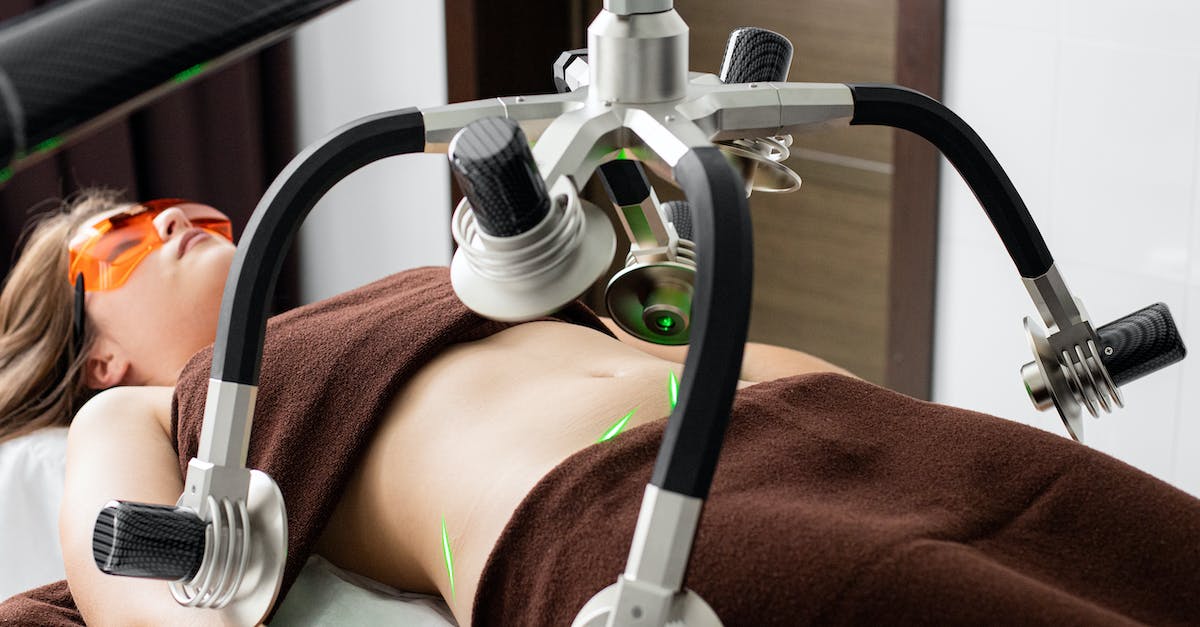When you’re navigating the healthcare system, safety is paramount. That’s why the National Patient Safety Goals (NPSGs) are crucial. They’re developed by the Joint Commission, an influential non-profit that’s been steering the course of healthcare quality and safety for over 60 years.
The Joint Commission’s NPSGs focus on specific areas of concern in patient care, aiming to solve widespread safety issues. They’re updated annually to ensure they address the most pressing challenges in healthcare settings, keeping you and your loved ones safe.
What are the National Patient Safety Goals (NPSGs)?
Established by the Joint Commission, the National Patient Safety Goals (NPSGs) are a series of targeted objectives designed to promote better safety practices within healthcare settings. These goals address critical areas in patient care where improvements can significantly reduce the risks of errors and complications.
As a patient or healthcare provider, you’re likely to encounter measures derived from these goals. NPSGs cover a range of issues, from improving accuracy in patient identification to preventing surgical errors. They are tailored to various healthcare settings, including hospitals, ambulatory settings, behavioral health services, and nursing homes, ensuring that they’re relevant across the board.
One fundamental aspect of the NPSGs is their annual update cycle. Each year, the Joint Commission assesses the changing landscape of healthcare and revises the goals to tackle new challenges. This dynamic approach keeps the NPSGs relevant and effective.
Here’s a quick overview of some common areas the NPSGs focus on:
- Improve the accuracy of patient identification by using at least two patient identifiers before administering medications or treatments.
- Enhance communication among caregivers to prevent mistakes related to miscommunication.
- Improve the safety of using medications by labeling all medications, even those in syringes, cups, and basins.
- Reduce the risk of healthcare-associated infections through hand hygiene guidelines and appropriate use of antibiotics.
- Identify patient safety risks such as those associated with suicide.
The NPSGs are not just guidelines but requirements that accredited and certified organizations must comply with. By adhering to these objectives, healthcare providers can significantly improve the safety and quality of care delivered to you or your loved ones.
Diligently following NPSGs can lead to noticeable improvements in patient outcomes. For example, consistent application of hand hygiene practices effectively reduces the incidence of hospital-acquired infections. Additionally, clear communication protocols aid in preventing medication errors, one of the leading causes of adverse events in healthcare.
Healthcare safety is an evolving challenge, and the NPSGs play a crucial role in steering the industry towards safer practices and better patient outcomes. By keeping abreast of these goals, healthcare professionals and organizations contribute to a culture of safety that benefits everyone involved.
Who develops the National Patient Safety Goals?
The Joint Commission, an independent, not-for-profit organization, is the driving force behind the development of the National Patient Safety Goals (NPSGs). This body is well-respected for its rigorous standards and unflagging commitment to improving healthcare for the public.
Each year, The Joint Commission gathers new data and conducts exhaustive research to determine the most pressing patient safety issues. In a collaborative effort, they convene a panel of experts, including frontline providers, healthcare safety researchers, and patient advocates. It’s a rich melting pot of perspectives, ensuring that the NPSGs address multifaceted aspects of patient safety.
The NPSGs are not static; they are reflective of an evolving healthcare landscape. The Joint Commission’s Expert Panels consider many factors:
- Emerging patient safety concerns
- Incidence and severity of healthcare errors
- Potential for error prevention
This meticulous process endows the NPSGs with both precision and authority. After draft goals are prepared, there is a period for public comment, giving you and other stakeholders a chance to provide input. Your feedback is a crucial component, and it helps refine the goals to make them more applicable and effective.
Understanding the origin of the NPSGs can empower you to keep abreast of the latest standards in healthcare safety. Knowing that these guidelines are crafted by an assembly of experts should instill confidence that adhering to them will lead to the highest level of patient care in your medical practice. The tireless efforts by The Joint Commission reflect their unwavering dedication to the mantra “Do no harm,” and in staying informed, you’re participating in a larger societal commitment to patient safety and quality care.
The Role of the Joint Commission in Patient Safety
When you’re considering patient safety and quality improvement, it’s vital to understand the significant role of the Joint Commission. As an independent, not-for-profit organization, the Joint Commission accredits and certifies over 22,000 healthcare organizations and programs in the United States. Accreditation by the Joint Commission serves as a symbol of quality that reflects an organization’s commitment to meeting certain performance standards.
The development and implementation of the National Patient Safety Goals (NPSGs) are central to the Joint Commission’s mission. These goals are specifically designed to address widespread areas of concern in patient safety and to promote specific improvements in patient care. You’ll find that the Joint Commission:
- Assesses current safety considerations and tailors the NPSGs accordingly.
- Collaborates with a diverse panel of healthcare professionals to ensure that the goals are comprehensive and actionable.
- Incorporates feedback from the public and healthcare organizations to refine the NPSGs.
Each year, the Joint Commission conducts a rigorous review process. Through this process, new NPSGs may be introduced and existing ones updated, ensuring that they remain relevant and effectively target the most pressing safety issues. Healthcare organizations that meet these safety standards are then accredited by the Joint Commission, which not only helps protect patients but also positions these organizations as leaders in healthcare quality and safety.
In your journey through the healthcare system, knowing which institutions are accredited can be immensely reassuring. The presence of the Joint Commission’s Gold Seal of Approval® indicates not just compliance with regulatory requirements, but also a proactive approach to enhancing patient safety and improving care quality.
Remember that the role of the Joint Commission doesn’t stop at setting goals and accrediting organizations. They also offer resources, education, and guidance to help healthcare providers implement NPSGs efficiently. This means healthcare teams are never alone in the quest to offer safer, higher-quality care.
How are the National Patient Safety Goals updated?
The revision process for the National Patient Safety Goals (NPSGs) is an annual undertaking that hinges on a comprehensive review cycle. In evolving the NPSGs, the Joint Commission mandates a systematic approach that reflects changes in healthcare policies and practices. This process begins with the collection and analysis of extensive data concerning patient safety issues. The sources for this data include:
- Scientific research
- Feedback from healthcare professionals
- Patient safety event reports
- Public comments
The analysis of this rich data trove leads to identifying areas that require attention or improvement. Once these areas are pinpointed, working groups consisting of experts in patient care, safety specialists, and other stakeholders congregate to deliberate on potential revisions or the introduction of new safety goals.
Draft versions of updated or new NPSGs are then developed. These drafts are subjected to further scrutiny through public comment sessions. The Joint Commission values input from healthcare professionals and consumers alike, as such feedback ensures the goals remain grounded in real-world applicability and address the most pressing safety concerns.
Before finalizing the NPSGs, the proposed changes undergo a rigorous internal review process within the Joint Commission. This involves assessing the effectiveness, necessity, and clarity of each goal to ensure they’re not only achievable but will also have a meaningful impact on improving patient safety.
Once the review process culminates, the Joint Commission publishes the updated National Patient Safety Goals. Healthcare organizations gear up to implement these standards, knowing they’re equipped with the latest, evidence-based strategies to enhance patient care safety. Importantly, the Joint Commission doesn’t just stop at disseminating these goals; they proactively offer educational materials and resources to support healthcare providers in adopting the new standards.
Remember, it’s your commitment to continuous improvement in patient safety that will help these standards truly make a difference in healthcare outcomes. Stay informed and be ready to integrate the latest NPSGs into your practice to maintain the highest quality of patient care.
The Impact of the National Patient Safety Goals
Since the introduction of the National Patient Safety Goals (NPSGs), there’s been a significant shift in how health care facilities prioritize and approach patient safety. The NPSGs serve as a catalyst for change, compelling institutions to evaluate and improve their safety protocols continually. You might be wondering about the tangible impacts of these goals on both healthcare workers and patients. To give you a clearer picture, let’s delve into the ways these goals have reshaped patient care.
Prevention of Medical Errors: The NPSGs place a strong emphasis on the prevention of medical errors, arguably one of the most critical areas for safety improvement. Since their implementation, hospitals have reported a decrease in medication errors and wrong-site surgeries, two of the most pressing concerns in healthcare.
Improved Communication: Another key area that the NPSGs improve is communication among healthcare professionals. By standardizing the methods of handoff communications and ensuring critical test results are conveyed on time, patients receive more coordinated and efficient care. This improved communication can be linked to fewer instances of patient harm and better overall health outcomes.
Patient Identification: To combat the risk of misidentification, rigorous patient identification processes were introduced. Precise identification protocols have greatly reduced the chances of mix-ups in treatments or procedures, directly affecting patient safety in a positive way.
A closer look at the numbers provides evidence of progress in these crucial areas:
| Area of Improvement | Before NPSGs | After NPSGs |
|---|---|---|
| Medication Errors | Higher Incidence | Reduced Incidence |
| Wrong-Site Surgeries | Common Occurrences | Marked Decline |
| Communication Failures | Frequent Reports | Drastic Reduction |
It’s important to note that while these goals have made significant strides in patient safety, they also demand continuous effort and adaptation from healthcare providers. The evolving nature of technology and medicine requires that the NPSGs adapt as well, ensuring that healthcare professionals are always ahead of the curve in patient safety.
Facilities that align with these goals benefit from the Joint Commission’s comprehensive support system, which includes guides, workshops, and educational resources designed to seamlessly integrate the NPSGs into daily practice. Thus, not only are patient outcomes improved, but the standard of care across the board is raised, creating an environment of excellence in healthcare.
Conclusion
You now understand the critical role the Joint Commission plays in developing the National Patient Safety Goals and enhancing patient care. With their guidance, healthcare providers have made significant strides in reducing errors and improving communication. Remember, it’s your continuous commitment to these goals that will sustain and further the advancements in patient safety. Embrace the support system offered and keep pushing the boundaries of quality care. Your efforts are vital in this ever-evolving healthcare landscape.


Leave a Reply